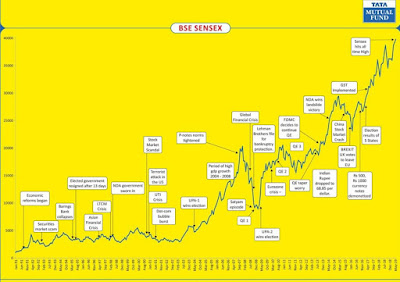We repeatedly hear on TV and read in the newspaper, invest in large-cap. Some of our friends or relatives keep stating that, they invest only in large-cap stock or Mutual fund.
We listen to them and nod our heads as if we understand. However, we keep wondering what is a large-cap? How can I understand more about the same?
Well, all mysteries die today.
By the end of this blog, you will not only become a mini-master on large-cap but also start educating your friends and family members.
Do remember to hit the follow button on the top of the page 😉 Thank you
Let us begin our journey of becoming an informed investor:
What is a Large Cap Mutual Fund or Large Cap Stock?
The Biggest, Fittest and Largest 100 companies in our country are called Large Cap Stocks, Mutual funds that strictly invest only in these 100 companies are called Large-Cap Mutual Fund.
Are there any official measures for a company to be called Large cap?
Good question, there can be an endless discussion about which company will qualify as a large cap.
Fortunately, the Securities and Exchange Board of India (SEBI) has defined which companies should be called a large cap.
Companies will be ranked 1 to 100 based on their market capitalization (size), only these companies will qualify to be called Large Cap.
What is Market Capitalization?
Market capitalization is determined by multiplying the company's outstanding shares (total share issued by the company) by the current market price of one share.
Example: Reliance industries is currently the largest company in India
Current Market Cap of Reliance Industry is 833,773.72 Cr
This figure was inferred with below-mentioned formula
Total Shares Outstanding (TSO) X Current Market Price (CMP).
What is the advantage of Investing in a large-cap stock?
- They provide stability to your portfolio
- They pay regular and in many cases consistent dividend (Interest Payout)
- When the Stock market falls, these stocks fall less
- They have been doing business for a long time with a well-established model.
- They have an excellent track record and very high probability of continuing business for many more years.
Where can I find the list of Large-cap stocks and Mutual Fund?
Large Cap Stock (👈 Link)
Large Cap Mutual Fund (👈 Link)
Wow, going forward I will invest only in Large Cap stocks and Mutual fund.
Well, this can be controversial. Investment Gurus might not be pleased if I agree and encourage you to invest only in large cap.
Nevertheless, if you have a personality that panics when stocks correct and find it challenging to sleep during the falling market. You should actually stay away from the stock market and invest only in fixed income products, read this Safe Investment (👈Link) you might find some secured options.
If you still want to invest in equities, then probably Yes. This is a segment that you can start with.
So Large Cap stocks won't see too much volatility, Right?
Wrong, when the stock market plunges every stock will fall. This is called market risk and there is no way to escape it.
However, these stocks have great intrinsic value. People will start buying these stocks sooner or later and the price will recover over a period of time.
Read the last section once again, invest only if you understand and are ok with this kind of volatility.
A classic example of how the stock market reacts during a crisis and how it comes back with time is illustrated very well in this image, I would recommend spending some time on this image this might stop you from doing anything childish during a bear market.
 |
| BSE Since 1991 |
Now, every time the stock market corrects almost all the stocks fall, some stocks recover quicker than others, while few never recover.
This is what differentiates Large Cap Stocks, they generally recover all the time. So when you invest in this category, you have this fact to reduce your anxiety.
Reliance Industries Ltd was listed in 1977, If we had invested INR One Lakh or One Hundred Thousand in this company, today it would have been more than 12 Crores or 120 Million, dividends not included.
Conclusion:
If you are new to Investment and really want to start growing your wealth over a period of time. Then you are in the right place.
You can inaugurate by investing in Large Cap Mutual Fund, slowly learn how to purchase direct stocks and start buying good large-cap stocks. This article might help What Is Value Investing (👈 Link)
PLEASE NOTE:
ONLY INVEST THE AMOUNT, THAT YOU DO NOT NEED AT LEAST FOR 3-5 YEARS!!
Dear Readers,
This blog is my personal attempt to help you. If you found this article to be helpful, kindly share it with your near and dear ones.
I would be very glad to hear your feedback, in fact, it will motivate me to continue my journey of, Blog and Teach.
Thanks and I wish and hope you make a lot of wealth from your investments.
All the best!! 👍👍👍
Cheers 🍹
Intelligent Investor











Super writeup on Large Cap Stocks.....Well done Manish....keep posting
ReplyDeleteThank u so much for ur kind words.
DeleteNicely penned. Very informative. Pl keep posting.
ReplyDeleteI'm very glad to read ur encouraging words :)
DeleteAmazing...writing up.. They way it explains everything is so simple..
ReplyDeleteDear Tresa,
DeleteIdea and intention both was to make the concept simple.
Thank u for highlighting it 🤗
Very nicely explained with short and simple examples. This gives a broader understanding of what exactly late cap mutual fund investing is all about. Thanks for keeping it simple as always.😊🤘🏻👍🏻
ReplyDeleteDear Sushma,
DeleteThank you for your kind words, making it simple was the idea and I'm so glad you pointed it out.
Cheers